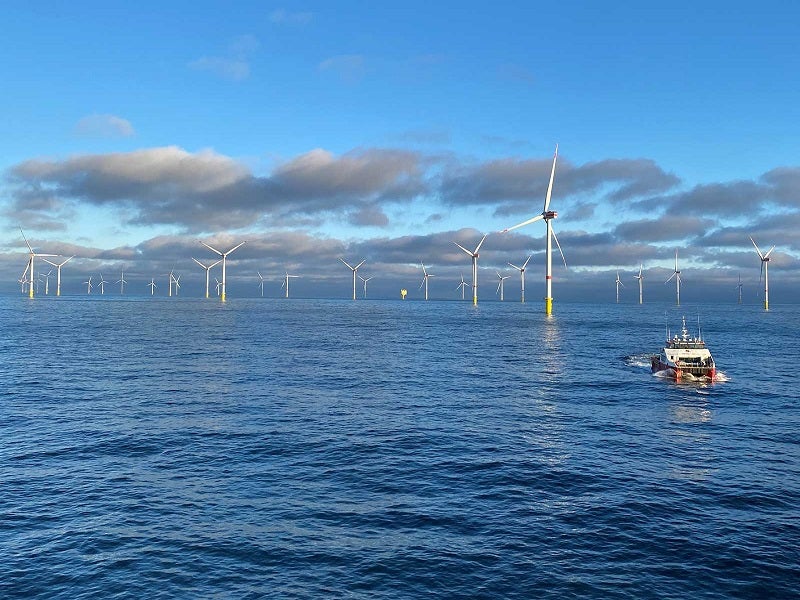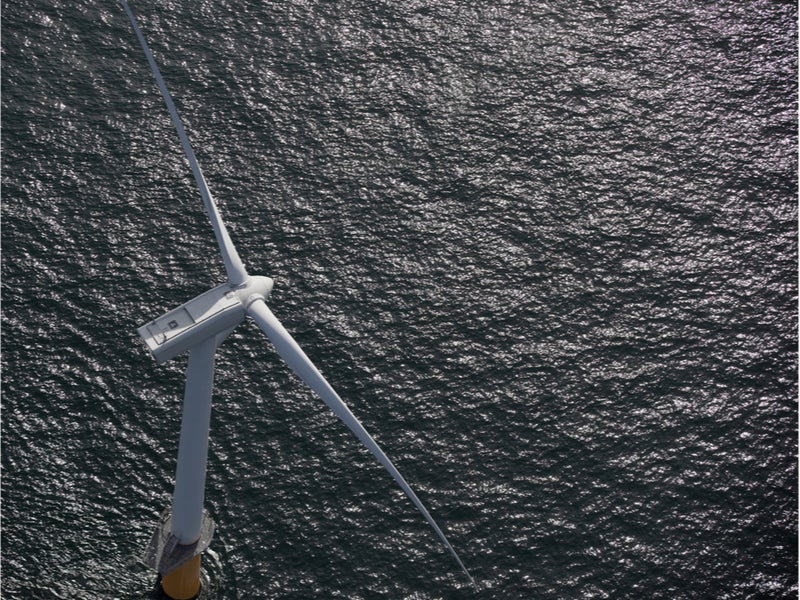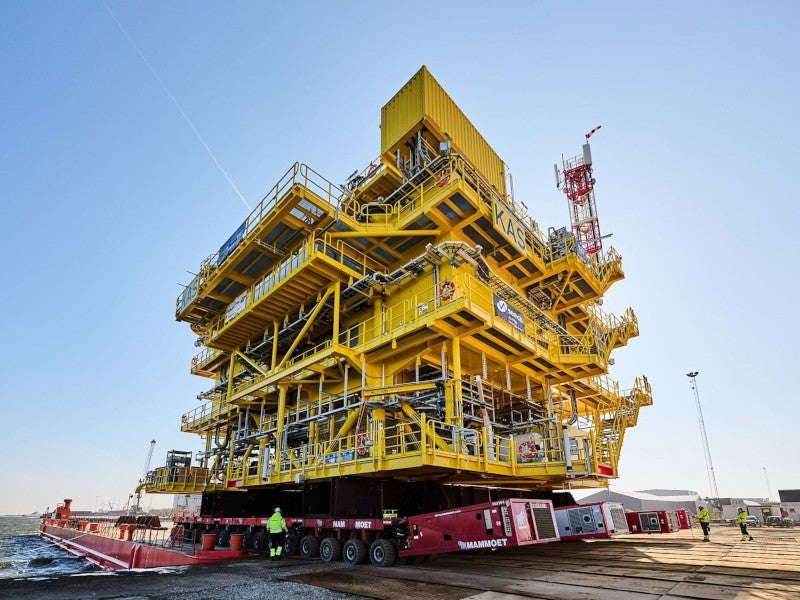Kaskasi, also known as Kaskasi II, is a 342MW offshore wind farm developed by the multinational energy company RWE in the German North Sea.
The planning permission for the project was awarded by the German Federal Maritime and Hydrographic Agency (BSH) in December 2020. The wind farm will support Germany’s goal of achieving 20GW of offshore wind energy capacity by 2030 and 40GW by 2040.
Construction of the offshore wind farm began started at the end of 2021, and all 38 turbines of the wind farm were commissioned by the end of 2022.
The wind farm officially commenced regular operation in March 2023, after the completion of all required tests.
The project is expected to generate enough clean energy to meet the electricity needs of approximately 400,000 households a year and is expected to have an operational life of at least 25 years.
Details of the Kaskasi offshore wind farm
The Kaskasi wind farm site is located approximately 35km north of Heligoland, Germany. It is installed with 38 Siemens Gamesa SG 8.0-167 DD Flex wind turbines featuring 81m-long B81 IntegralBlades, which are the world’s first recyclable wind turbine blades. Made with the breakthrough RecyclableBlade technology, the blades can be recycled at the end of their lifecycle.
Each wind turbine has a rotor diameter of 167m and a swept area of 21,900m² (235,730ft²).
The turbines also feature Siemens Gamesa’s Direct Drive platform, which ensures stability and reduces the costs and risks associated with these sites.
Construction of the Kaskasi offshore wind farm
The wind turbines were installed on monopile structures. Three special collars, which are based on RWE’s patented technology, are installed around the monopile foundations on the seabed at a water depth of up to 25m. The collared monopile is expected to provide additional support for lateral loading while increasing the bearing capacity of the foundation.
The installation was performed using conventional hammering and ‘vibro pile driving’ methods, to reduce installation time and noise levels.The turbine was installed and connected to the grid in August 2022, with the remaining 37 turbines installed by November 2022.
The offshore substation was installed in March 2022. The substation topside weighing 1,400 tonnes (t) was placed on the foundation using Gulliver, a floating heavy lift vessel operated by DEME’s subsidiary Scaldis Salvage and Marine Contractors.
Power transmission from the wind farm
The Kaskasi wind farm is connected to the same grid connection cluster as the 295MW Nordsee Ost wind farm, which is also operated by RWE.
The power generated from the Kaskasi wind farm is collected using 52km-long 33kV aluminium core inner array grid cables that are installed in water depths ranging between 18m and 25m. The cables transmit the power to the offshore substation. The three-phase electric power from the offshore substation is transmitted through two export cables to a high-voltage direct current (HVDC) platform called Helwin Beta. This platform further transmits wind power through a 130km-long connection to the land-based substation in Schleswig-Holstein.
Contractors involved in construction
Siemens Gamesa was selected to supply the wind turbines for the Kaskasi wind farm in April 2020. Danish steel contractor Bladt Industries was appointed to manufacture and supply 39 monopile foundation structures for the project. It also provided the offshore substation in collaboration with Semco Maritime and ISC Engineering.
Bladt Industries built the substation, ISC Engineering designed it and its Semco Maritime provided electrical installations. DEME Offshore was engaged to transport the three monopile collars from Denmark to the Kaskasi construction site. The company was also responsible for the installation of the steel collars using the jack-up vessel Neptune. The collars were designed by the German-based civil engineering company JBO. Siemen Gamesa’s contribution was supported by Portugal-based the wind turbine service provider Endiprev in the installation of offshore wind turbines for the project.
Subsea 7 secured the contract for the transportation and installation of the offshore substation foundation, the monopile foundations and the inner array grid cables at the wind farm in April 2020. Dutch subsea cabling specialist TKF was contracted by Seaway 7, a subsidiary of Subsea 7, to supply 33kV aluminium core inner array grid cables with different cross-sections for the wind farm.
Subsea cable protection systems (CPS) provider Tekmar received a contract to supply its patented TekLink CPS to protect the export cables of the wind farm in February 2021.
Dutch transmission system operator TenneT was selected to provide the offshore grid connection. The company appointed global subsea cable manufacturer Zhongtian Technology Submarine Cable (ZTT) to manufacture the cable systems, which were installed by the Greek company Asso.subsea.
Correll Services was, in turn, selected by ZTT to perform cable routing and testing of the 155kV subsea cables. Spanish firm Sener provided the preliminary tender design of the offshore substation for the project. Vos Prodect Innovations was engaged to provide cable hang-off systems for the installation of the turbines.
Other contractors involved in the project include Trelleborg, CAPE Holland and ProCon Wind Energy.






